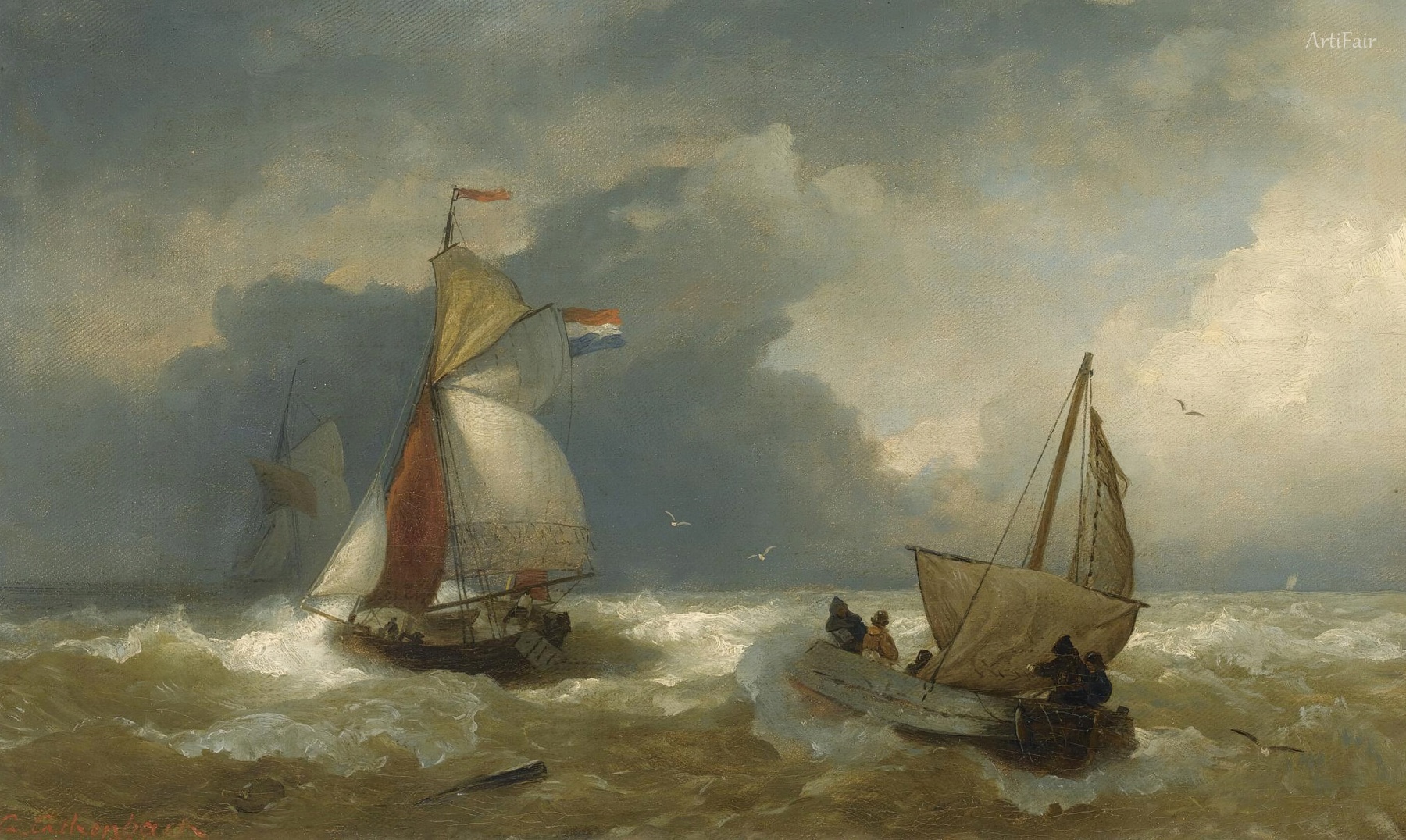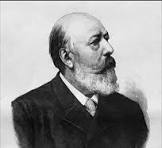

Andreas Achenbach
DE
161
Artworks
1815 - 1910
Lifespan
Artist Biography
Andreas Achenbach, born September 29, 1815, in Kassel, Germany, experienced a peripatetic childhood due to his father Hermann's business ventures, including a formative stay in Saint Petersburg where he first received drawing lessons. Settling in Düsseldorf, Hermann's inn became an artists' hub, nurturing Andreas's interest. At just twelve, in 1827, he enrolled at the Kunstakademie Düsseldorf, studying under Friedrich Wilhelm Schadow and Heinrich Christoph Kolbe. His talent was quickly recognized; by sixteen, he sold his first painting at an exhibition. In 1832, his focused study of landscape painting under Johann Wilhelm Schirmer began, cementing the direction of his future career as a master of landscape and marine art.
Extensive travels were crucial to Achenbach's artistic maturation. A 1832-33 trip to the Netherlands exposed him to 17th-century Dutch masters, deeply influencing his realistic portrayal of nature and atmosphere, especially in seascapes. Early acclaim came in 1836 with a significant sale in Cologne to Prince Frederick. After tours through Bavaria and Tyrolia and a stint in Frankfurt with Alfred Rethel, his wanderlust led him to Scandinavia for nature studies around 1835-36. However, his Italian sojourn (1843-45) proved most transformative. The light and landscapes of the Campagna and Capri liberated his style, leading to a brighter palette and a decisive break from classical conventions towards a more direct, empirical representation of nature, exemplified by his dramatic 1836 work, "Sea Storm."
Andreas Achenbach stands as a seminal figure in the Düsseldorf School of painting, significantly shaping 19th-century German art. A pioneer of German Realism, he diverged from Romantic idealization, choosing instead to depict nature with objective fidelity. He was among the first in the Düsseldorf circle to portray landscapes and seascapes for their intrinsic power and beauty, unburdened by allegorical or historical overlays. His canvases are celebrated for their dynamic compositions, meticulous detail, and profound ability to convey nature's raw energy—from tempestuous North Sea storms to tranquil Dutch canals and Rhineland vistas. This approach, emphasizing keen observation and technical mastery, contrasted sharply with more sentimental contemporaries. He and his brother Oswald, also a noted landscapist, were famously dubbed the "Alpha and Omega" of landscape painters.
Returning to Düsseldorf in 1846, Achenbach managed the family brewery. His personal life flourished; in 1848, he married Marie Louise Hubertine Catharine Lichtschlag, and they had five children, including Maximilian, who became the opera singer Max Alvary. Achenbach was a pillar of Düsseldorf's artistic community, co-founding the influential "Malkasten" (The Paint Box) artists' association in 1848. He was instrumental in acquiring the Jacobi estate for the association, which became the "Malkastenpark," a lasting cultural landmark. While prolific in his own work, he was selective with students, primarily mentoring his brother Oswald, alongside artists such as Albert Flamm, Marcus Larson, Apollinary Goravsky, and the American William Stanley Haseltine, thereby extending his realistic principles internationally.
Achenbach's career was marked by widespread acclaim and numerous honors, including the Belgian Order of Leopold (1848), Russian Order of Saint Stanislaus (1861), Norwegian Order of St. Olav (1878), and the prestigious Prussian Order Pour le Mérite for Science and the Arts (1881). Honorary memberships from the Pennsylvania Academy of Fine Arts (1853) and Milan's Accademia di Brera (1862) affirmed his international stature. Düsseldorf recognized his contributions by making him an honorary citizen in 1885. Andreas Achenbach died in Düsseldorf on April 1, 1910, at 94. His funeral at the Malkasten house was a significant event, and he was interred in a tomb with sculpture by Karl Janssen. His enduring legacy lies in his pioneering Realism, his leadership in the Düsseldorf School, and his masterful depictions of land and sea, housed in major museums worldwide. The "Achenbachweg" in Düsseldorf further commemorates his impact.